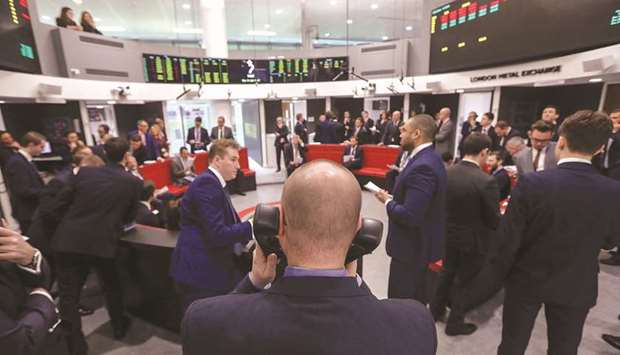Plans by the London Metal Exchange to launch a European steel contract are likely to be delayed until next year because the industry wants it to be priced in euros, which the exchange’s clearing house cannot process, industry sources say.
This week the LME launched a suite of cash-settled futures contracts including hot rolled coil steel, used widely in the engineering and auto industries, for North America and China.
The exchange’s North America and China contracts will compete with the US-based CME Group’s Nymex steel contract and with Shanghai Futures Exchange’s Chinese steel contract.
The LME’s dollar-based European steel contract, by contrast, has no significant competitors, but the exchange has been forced to delay its launch because Europe prices steel in euros.
A steel industry source said major companies using steel derivatives had been “vocal about the contract being denominated in euros from the day the LME announced plans to look at it”.
“As a global market, the LME is principally designed with the dollar as the primary currency for trading and clearing across all contracts,” the LME said in response to request for comment.
Trading sources say switching the contract specification to euros is not difficult and that the problem lay with LME Clear, which can only clear dollar-based contracts.
“They haven’t given us a definite timeline for when the European steel contract might be resurrected.
It won’t be this year, fixing LME Clear is going to be a costly exercise and could take until next year,” a steel trader said.
LME Clear will need a major overhaul to clear euro contracts, which will involve a large amount of investment and time, sources said.
“If the LME doesn’t have the resources, the European contract may have to be abandoned, unless the industry agrees to try and work with a dollar denomination,” another steel industry source said. “The European steel contract was conspicuous by its absence, there was a fair amount of interest in it. We were looking at it as a possible hedging tool. For us a dollar contract would create currency risk.”
The risk comes from fluctuations in the dollar’s exchange rate against the euro as many companies may not have access to facilities that allow hedging against adverse currency moves.
“New contracts take a long time to pick up any sort of momentum and starting off with a handicap like this (dollar price) would not have been ideal,” another steel trader said.
The LME already has contracts for steel rebar, a type of construction steel, and steel scrap, which have enjoyed modest success since their 2015 launch and brought much relief to the exchange after its steel billet contract failed.
Some 4.9mn tonnes of scrap and 544,000 tonnes of rebar were traded on the LME last year, versus some 3mn tonnes of scrap and 644,000 tonnes of rebar traded in 2017, according to Refinitiv Eikon data. Having lost some market share in recent years to the CME and ShfE, the LME was hoping to make inroads into steel, a global industry worth about $900bn a year.
If the exchange succeeds, it would not only provide a welcome source of revenue and volumes to the 142-year-old LME, but could also change the way the steel industry hedges and prices contracts.

Traders react on the trading floor of the open outcry pit at the London Metal Exchange. Plans by the LME to launch a European steel contract are likely to be delayed until next year because the industry wants it to be priced in euros, which the exchange’s clearing house cannot process, industry sources say.
